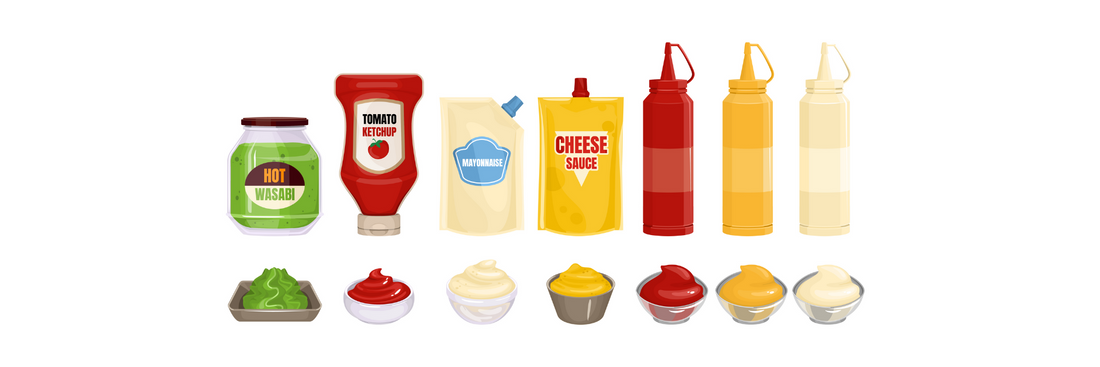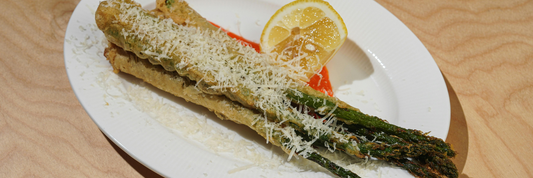In today’s food market, sauce packaging is more than protection—it drives product quality, brand impact, and consumer convenience. From glass bottles to spouted pouches and sustainable materials, packaging directly affects your shelf appeal and bottom line.
Whether you’re launching a small-batch hot sauce or scaling production, this guide covers key packaging types, materials, and filling options—helping you choose what fits your product, scale, and sustainability goals.
Different Types of Sauces
Here are some popular types of sauces commonly used in cooking:
-
Tomato Sauce: Tomato sauce is a versatile favorite, known for its sweet and tangy flavor. It’s widely used as a topping for pizza, pasta, and many other dishes. This sauce can be packaged in various formats, including pouches, jars, and bottles, depending on the product’s intended use.
-
Soy Sauce: Soy sauce is a dark, salty liquid made from fermented soybeans. It’s a staple condiment in many Asian cuisines, adding a rich, umami flavor to countless dishes. Because soy sauce is sensitive to air and light, high-quality packaging plays a crucial role in preserving its taste and freshness.
-
Hot Sauce: Hot sauce is a spicy condiment typically made from chili peppers, salt, vinegar, and sometimes citrus for added zest. It’s used to enhance dishes with heat and bold flavor. Packaging needs to ensure product stability and prevent leaks.
-
Pasta Sauce: Pasta sauce comes in many variations, and consumers expect it to deliver authentic flavor and the right texture. Choosing the right filling and packaging equipment is essential to protect its quality, consistency, and shelf life.

Sauce Packaging Types
Choosing the right packaging for your sauce product is more than just aesthetics—it’s about preserving flavor, ensuring safety, optimizing shelf life, and aligning with your brand identity and production scale. Below are the most common sauce packaging types used across the food industry, each suited for specific use cases, product types, and market demands.
1. Sachets
Sachets are small, single-serve packets often used for ketchup, mayonnaise, hot sauce, and dressings. Ideal for foodservice, takeout, and travel packaging, they are:
-
Cost-effective: Low material usage and shipping cost.
-
Convenient: Easy to tear, hygienic portioning.
-
Best for: Fast-food chains, restaurants, and on-the-go condiments.
Common materials: Multi-layer laminated films with high barrier properties for moisture and oxygen protection.

2. Bottles
Standard bottles (usually glass or PET plastic) are the most recognized form of sauce packaging for consumer shelves.
-
Glass bottles: Offer a premium look, preserve flavor, and are fully recyclable. Great for gourmet sauces and small-batch artisan products.
-
PET plastic bottles: Lightweight, shatter-resistant, and ideal for mass production.
Ideal for: Hot sauces, soy sauce, pasta sauces, and salad dressings.
3. Squeeze Bottles
Designed for easy dispensing, squeeze bottles are increasingly popular across condiment categories.
-
User-friendly: Consumers can control portioning without utensils.
-
Efficient: Reduces waste, avoids contamination.
-
Popular in: Ketchup, mustard, BBQ sauce, aioli.
Best paired with: Flip-top or valve caps for mess-free use.

4. Cans
Cans are used mostly for bulk or long-shelf-life sauces such as tomato paste, cooking sauces, or industrial ingredients.
-
Durable: Withstands heat treatments like sterilization and retort processing.
-
Space-efficient: Stackable, good for warehouse storage.
-
Materials: Usually tinplate or aluminum.
Applications: Food manufacturing, foodservice, and export packaging.

5. Jars
Jars—particularly glass jars—are suited for sauces that are spooned or need to maintain texture, like salsa, pesto, or chutney.
-
Preserves texture and integrity of chunky or thick sauces.
-
Wide-mouth design enables easy scooping and visibility.
-
Recyclable and premium presentation.
Pair with: Metal lids with tamper-evident seals or vacuum indicators.

6. Tubs and Cups
Used primarily for dips, spreads, or chilled sauces, tubs and cups are available in plastic or compostable variants.
-
Portion-controlled sizes: Common for hummus, ranch, or nacho cheese.
-
Microwaveable options for hot dips.
-
Ideal for: Supermarkets, meal kits, and catering.
Add-ons: Snap-on lids, foil seals, and multi-compartment options.
7. Pouches
Flexible pouches are revolutionizing sauce packaging with their versatility and environmental benefits.
-
Lightweight & space-saving: Reduce storage and shipping costs.
-
Formats: Stand-up pouches, spouted pouches, and tear-off sachets.
-
Eco-conscious: Many options are recyclable or compostable.
Perfect for: Refill packs, family-size sauces, or gourmet brands embracing sustainability.
Sauce Packaging Materials & Their Suitability
Selecting the right packaging material for sauces is crucial—not just for product integrity, but also for cost-efficiency, sustainability, and customer experience. Here's a breakdown of common packaging materials used in sauce production and how they match various use cases.
Glass
Glass is a non-reactive, inert material that protects sauces from oxygen, moisture, and chemical leaching. It’s especially ideal for high-acidity or oil-rich products like hot sauces, chutneys, vinaigrettes, and gourmet condiments.
Advantages:
-
Preserves flavor and aroma: No interaction with contents.
-
Premium perception: Preferred for artisanal and specialty products.
-
Recyclable: 100% and infinitely recyclable without loss of quality.
-
Heat-tolerant: Suitable for hot-fill processes and pasteurization.
Best for: Small-batch, gourmet, or export products that emphasize quality and brand image.
Plastic
Plastic packaging—especially PET (Polyethylene Terephthalate) and RPET (Recycled PET)—is widely used in large-scale sauce production due to its cost-effectiveness and flexibility.
Advantages:
-
Lightweight and break-resistant: Lowers shipping costs and damage risks.
-
Customizable shapes: Allows unique brand identities via mold designs.
-
BPA-free options: Ensure food safety.
-
Squeeze-friendly: Excellent for products needing controlled dispensing.
Best for: Ketchup, mustard, dressings, or sauces requiring squeeze formats.
Metal
Tinplate and aluminum cans are highly durable and provide superior barrier protection, making them ideal for sauces that require long shelf life or are exposed to high-heat treatments.
Advantages:
-
Strong barrier: Blocks out light, air, and moisture.
-
High-heat compatible: Suitable for retort sterilization.
-
Stackable and transport-efficient.
Best for: Tomato paste, cooking bases, and industrial-grade sauces in bulk.
Flexible Films
Flexible packaging (like multi-layer pouches) is gaining ground for its versatility and minimal material use. Often made from laminated plastic and aluminum layers, these packages are lightweight and designed for high-barrier protection.
Advantages:
-
Compact and efficient: Saves shelf and shipping space.
-
Customizable features: Spouts, resealable zips, tear-notches.
-
Great product-to-package ratio.
Best for: Refill packs, travel-size portions, and e-commerce friendly products.
Conclusion
The right sauce packaging does more than hold your product—it preserves quality, communicates your brand, ensures regulatory compliance, and enhances consumer convenience. As the industry evolves with eco-friendly materials, smart dispensers, and flexible automation, your packaging choices must align with both market trends and your production capabilities.





